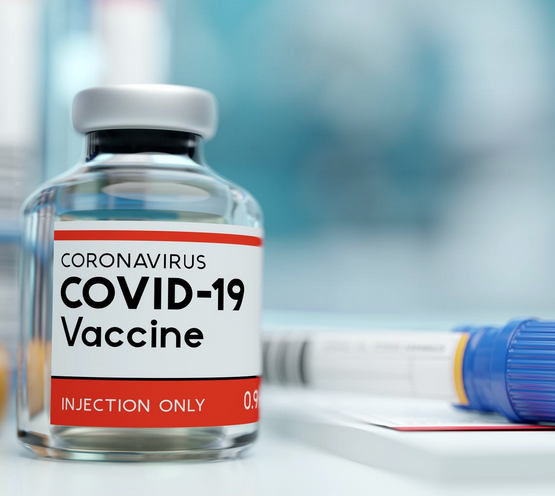I got a great bit of news on Tuesday: I was finally invited to book an appointment for the first dose of the Covid-19 vaccine. So I’ll be heading to Guy’s Hospital, a few minutes from my home, on Saturday morning at 8.45am to receive it.

I know this is not the end of the crisis as we’ve known it, but coming less than 12 months since the first lockdown happened, it’s truly remarkable progress. I still don’t want to encounter the virus, but if I do, it’s unlikely to kill me anymore.
In a feature in The Times on the weekend, Tom Whipple wrote a thoughtful piece on the history of pandemics, in which he charted the likely future. He quotes Mark Woolhouse, professor of infectious disease epidemiology at the University of Edinburgh, describing how it ‘will be a new normal’.
“Even with vaccines, and that is no small ‘even, getting back to a pre-corona world ‘will be a long haul’. However, he says, life will get better and there are many possible futures where it does so fast. ‘This coronavirus will have good seasons and bad seasons. It could be that in bad years we get significant outbreaks, and the chief medical officer has to consider whether we implement social distancing of some kind. The general trend, though, is that every year is better than the one before.’ There won’t be a single moment when we know we are free. Instead, like boiling a frog in reverse, things will just keep on slowly improving.”
Whipple goes on to point out, “The Spanish flu has been killing people for a century and this should not be a surprise. Pandemics almost never end. Instead they fade. We become accommodated to the virus, and the virus becomes accommodated to us.”
He quotes Chris Jewell, a Lancaster University epidemiologist who sits on the government’s Covid modelling committee. “Experience of any other disease you care to mention — 1918 Spanish influenza, cholera, ebola to name a few — tells us that epidemics rumble on with a slowly decreasing number of small, focal outbreak clusters,” Sometimes, he warns, no matter how good a vaccine programme, these clusters will be serious, and adds: “As a society we’ll need to remain vigilant well into 2022 to detect such clusters, with self-isolation becoming the norm.”
So the vaccine I am receiving on Saturday is no magic bullet. And Whipple points out,
“Few expect social distancing to end this summer. We do not want to risk, in the worst scenarios, a tightening in winter. But from now on sudden reversals will be rare. Last year measures were switched on and off: things got better then worse again, restaurants ordered stock then binned it, schools opened for a day then closed for a term. This year restrictions will be more like a ratchet, to be eased but not reimposed. ‘The first epidemic is almost always the worst,’ says Woolhouse, who is speaking in a personal capacity but also sits on the government’s modelling committee. We are still in this first epidemic; most of the population has no immunity. Once that changes, hopefully mainly through vaccination, ‘we see the transition from an epidemic virus to an endemic virus’.”
At Monday’s Downing Street press conference, Boris Johnson spoke of how mass vaccination is only one part of the way out of this crisis. “As you know, we intend to vaccinate all the adults in the country by the autumn. Plus, lateral flow testing, rapid testing, for those bits which are the toughest nuts to crack, such as nightclubs, theatres, or those parts of the economy that we couldn’t get open last year. I think that will be the route that we go down. We’re already seeing lots of businesses using the potential of rapid on-the-day testing as well.”
The practical implications of this are enormous. I’ve been for two lateral flow tests myself, and the process takes roughly 45 minutes to get a result: 15 minutes to register and do the test, then a half an hour wait for the result to be texted to you. I’m sure those times could be reduced, but the practicalities of testing a capacity house at say, the Royal Albert Hall or London Coliseum (5,272 seats and 2,196 seats respectively) are still considerable.
Another thing too: It is a self-administered test, and relies on each person carrying it out properly to get an accurate reading. The nose swab has to go beyond the point it is comfortable to be. I wonder how many people stop short of that point when they do it?
But even assuming they find a way to practically achieve offering accurate lateral flow tests to every audience member, surely the bigger elephant in the room around theatres reopening en masse is whether there will be the mass audience for them. In a story in the Daily Telegraph last week, it was reported that
“London faces up to two more years cut off from lucrative foreign tourism as the lingering effects of the pandemic continue to deter travellers, one of the capital’s biggest landlords has warned.”
Brian Bickell, the chief executive of West End property company Shaftesbury, is quoted saying that overseas visitors may not return in numbers before “late 2022, perhaps not until into 2023, being realistic”. He also says, “I’d love to be proved wrong, but the reality is it needs a lot of things to come together to give people that confidence to start travelling, and the question is whether people want to necessarily travel back to cities in the same way.” In addition, London’s permanent population is estimated to have fallen by 700,000, as well.
So it’s not just vaccines — or quick testing — that will restore us to normality. A lot of other things need to happen, too.
